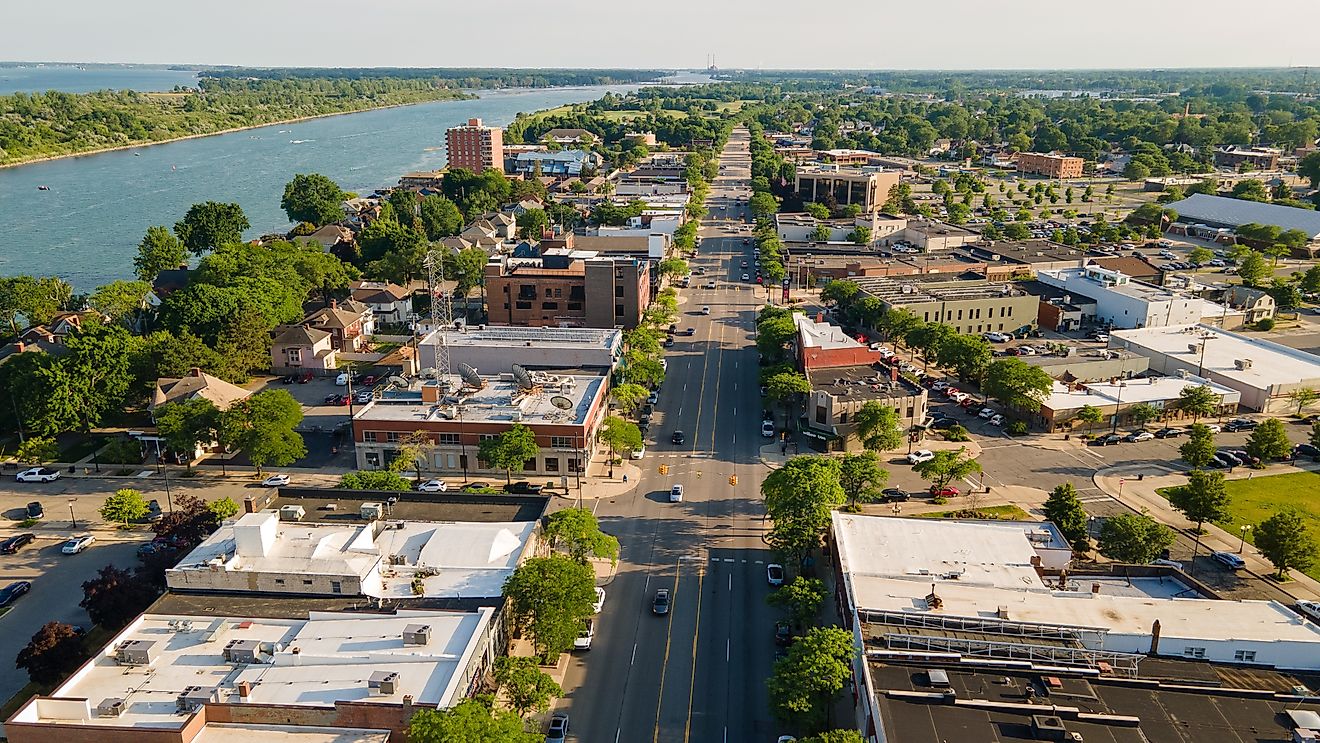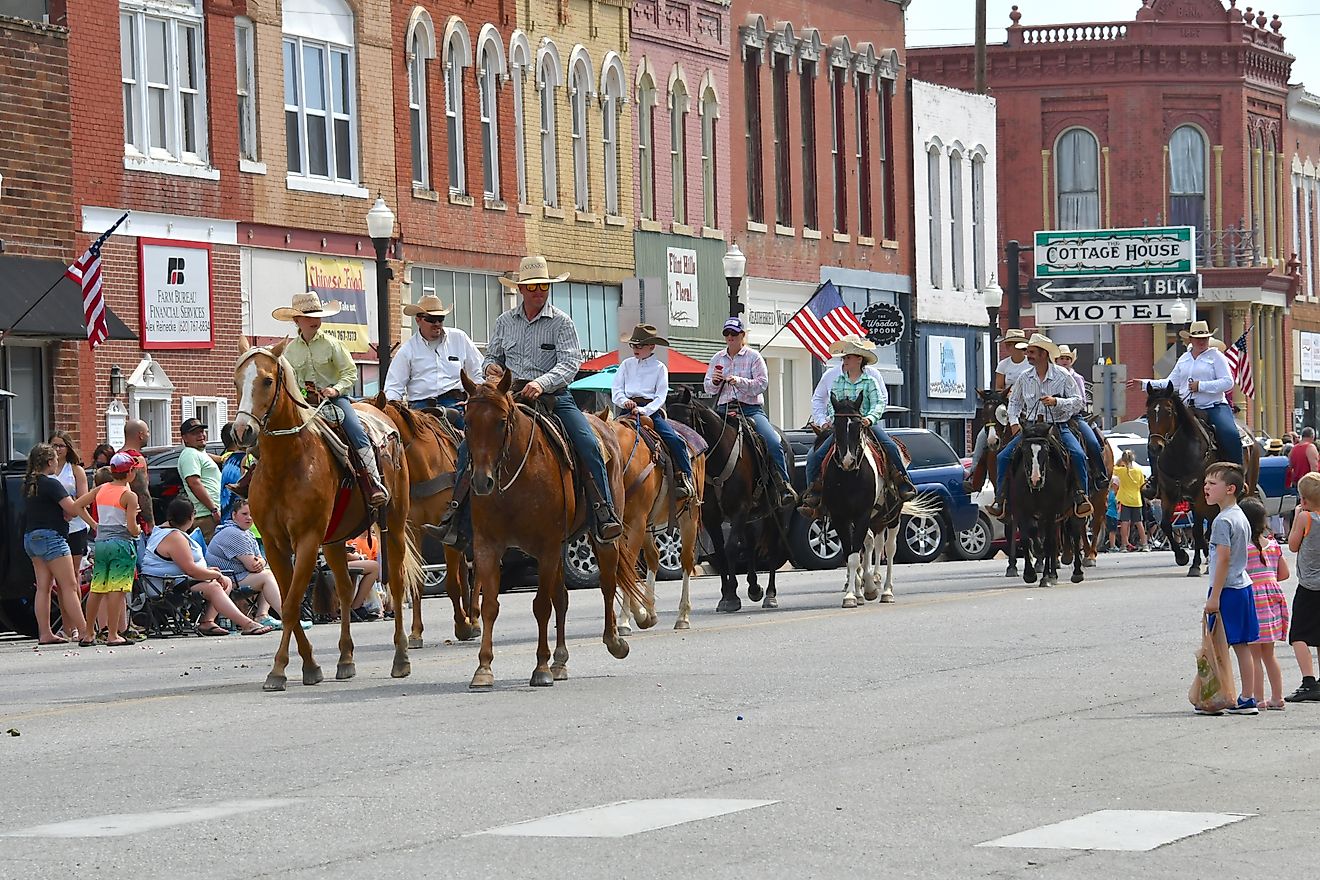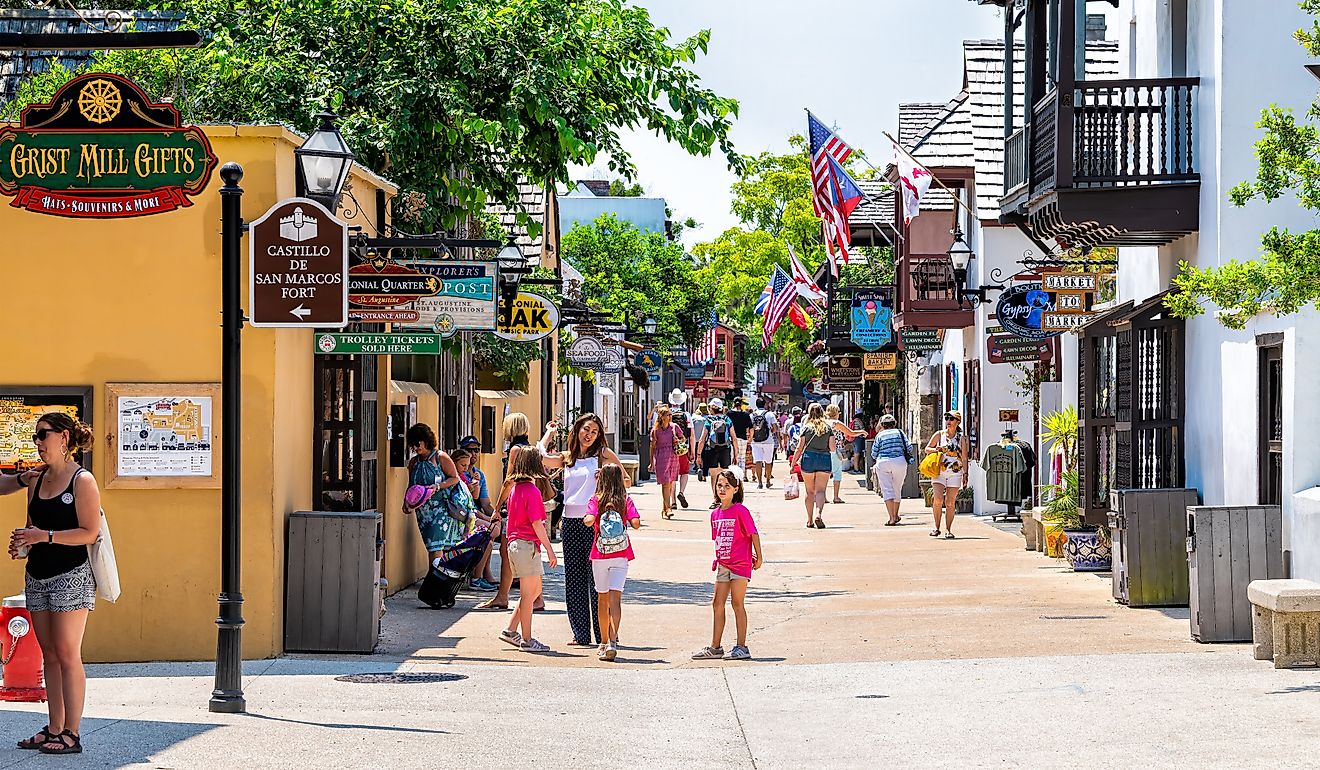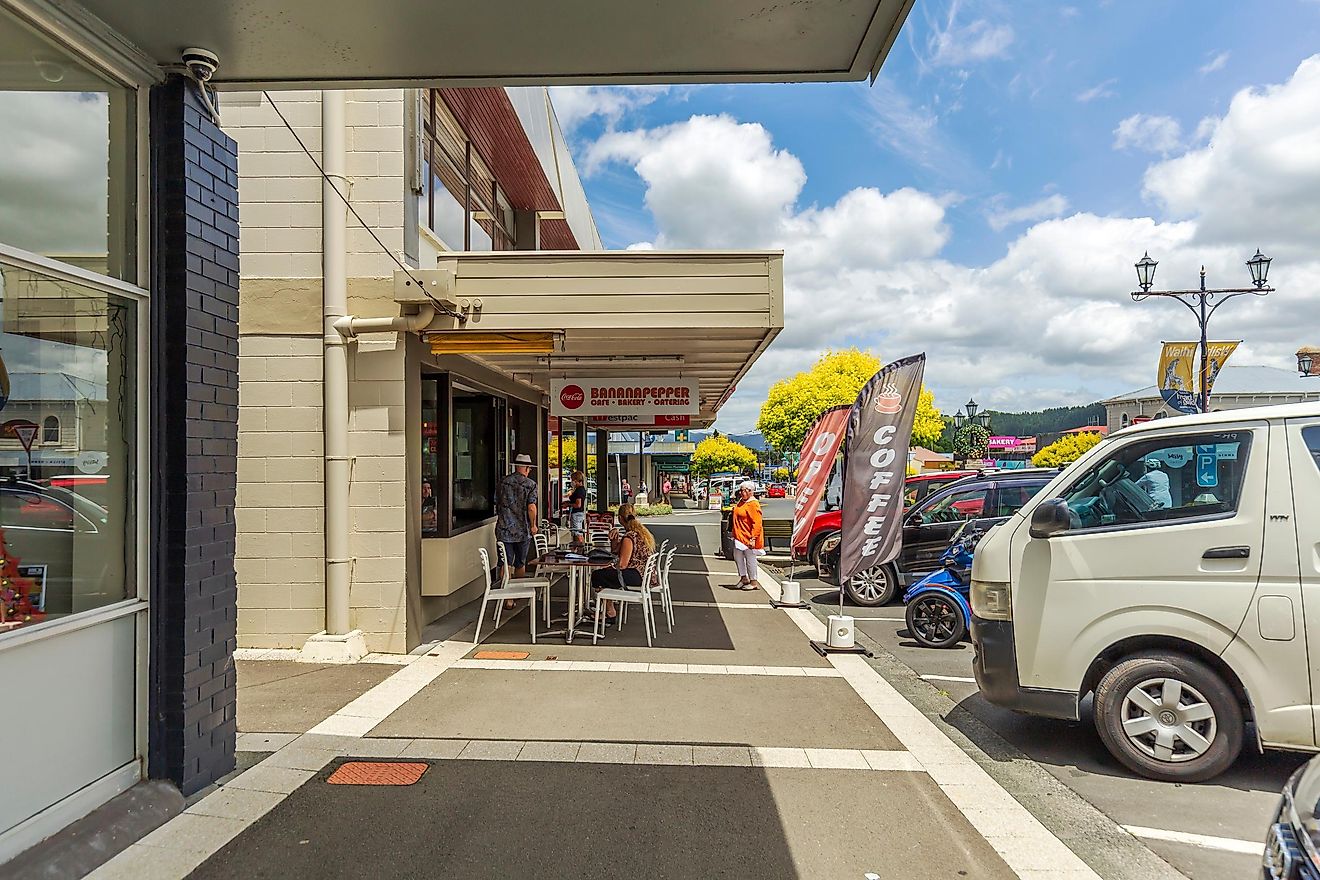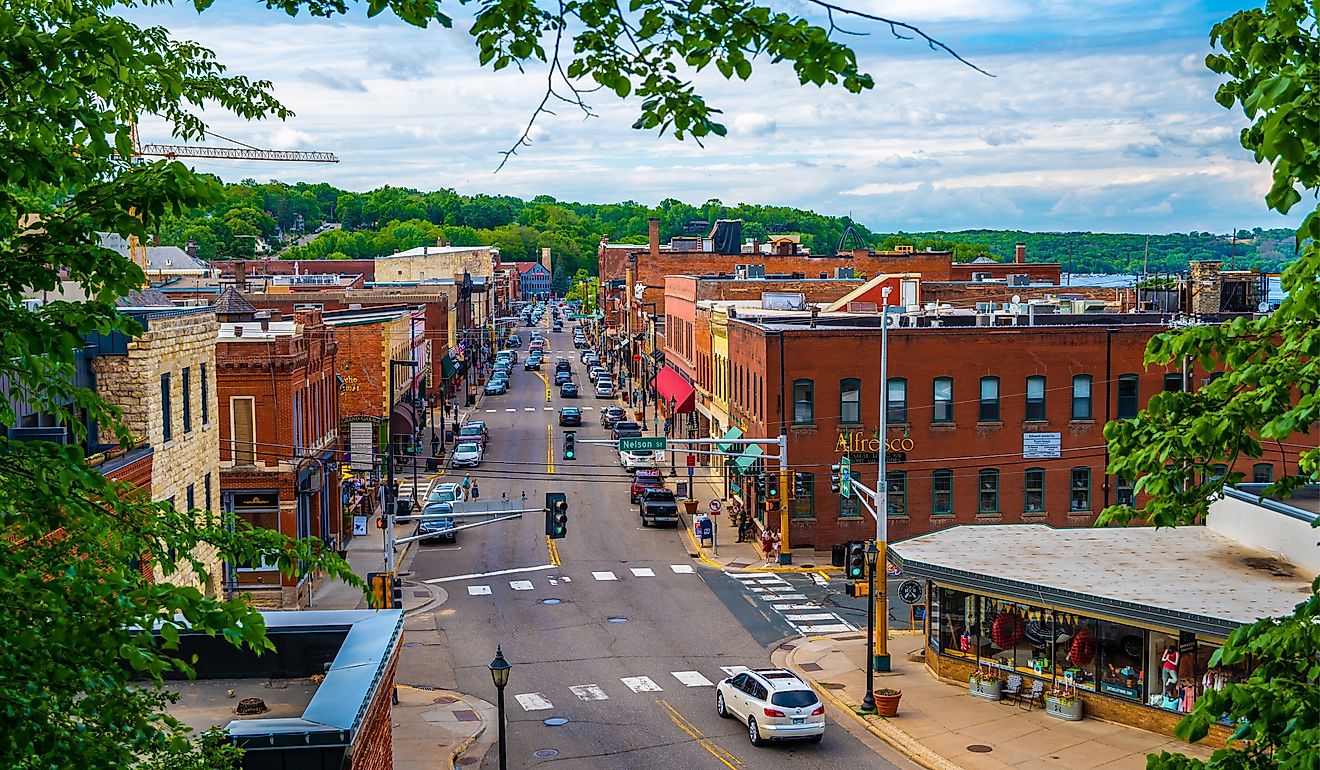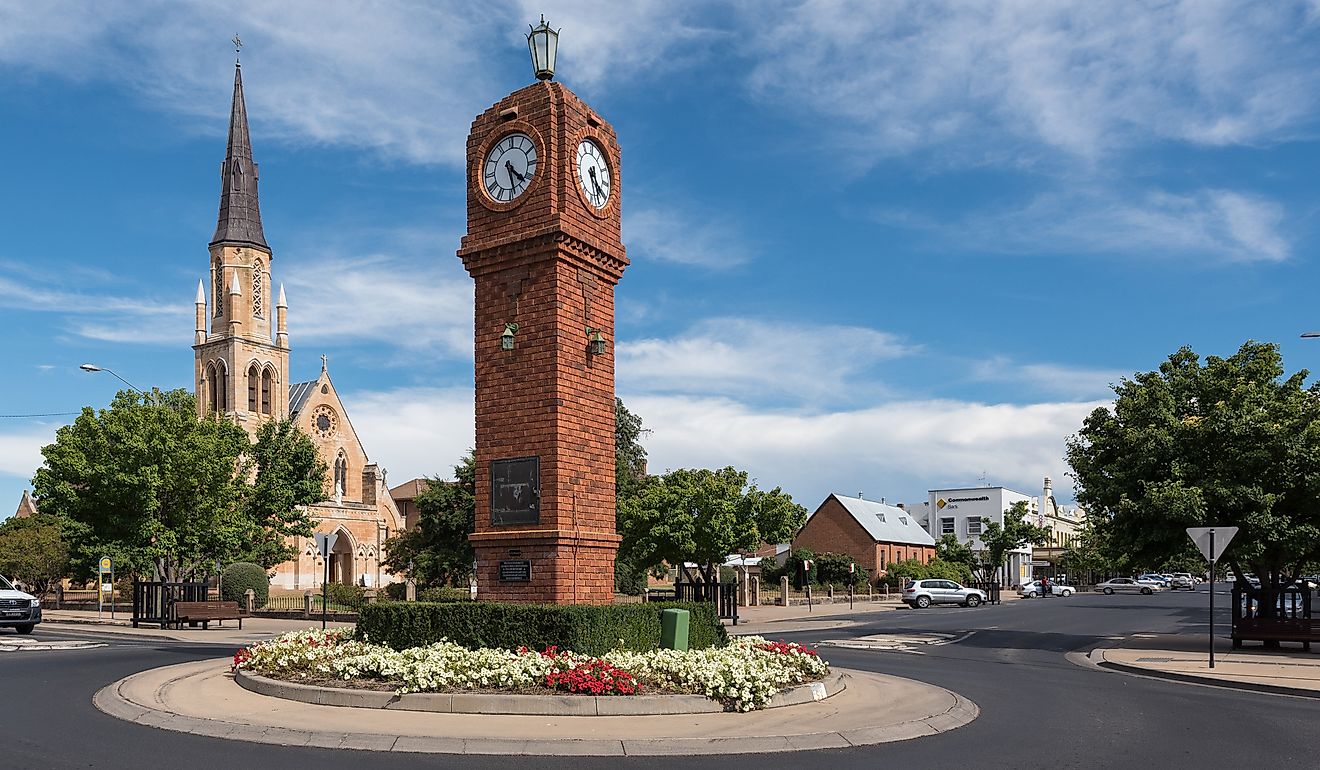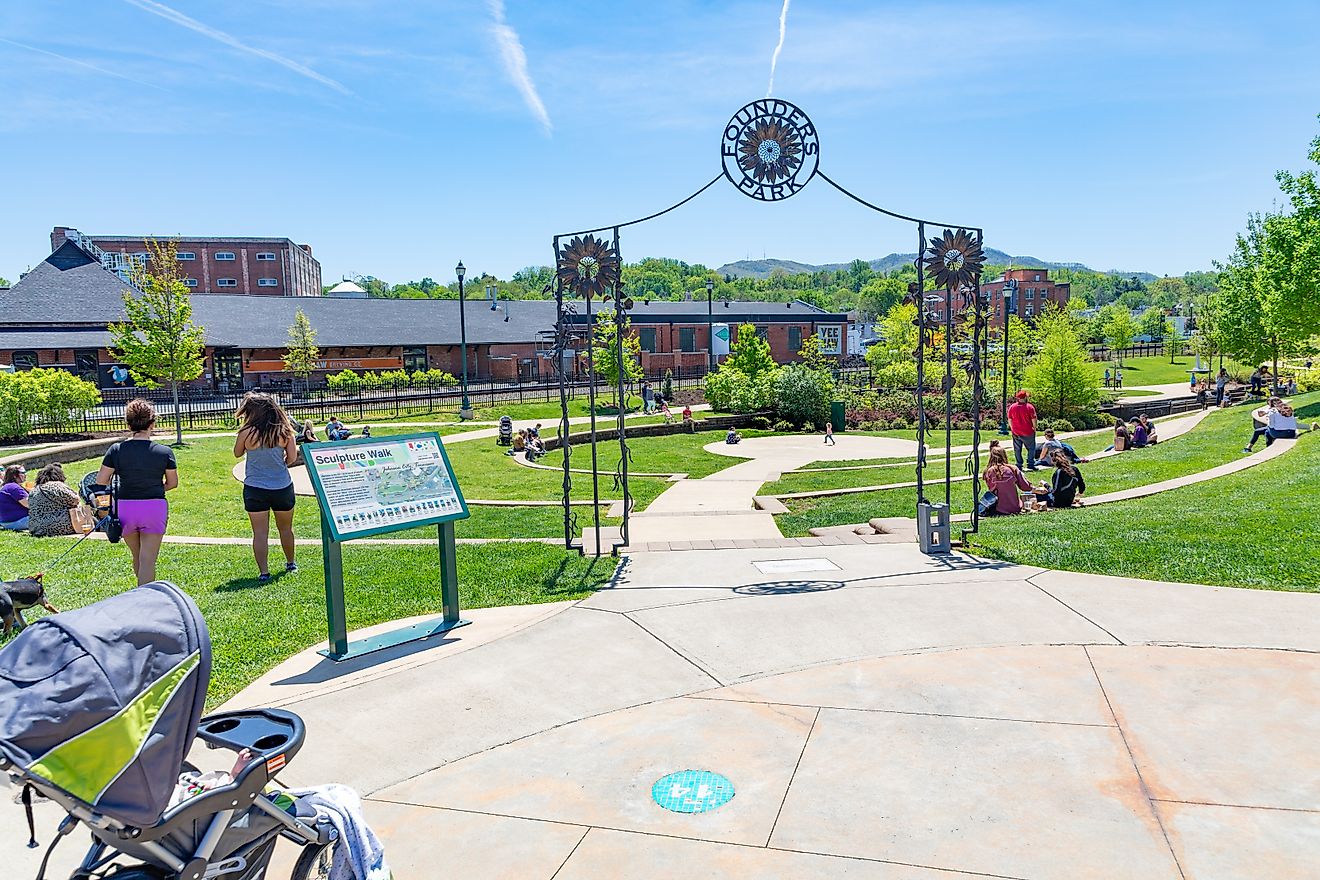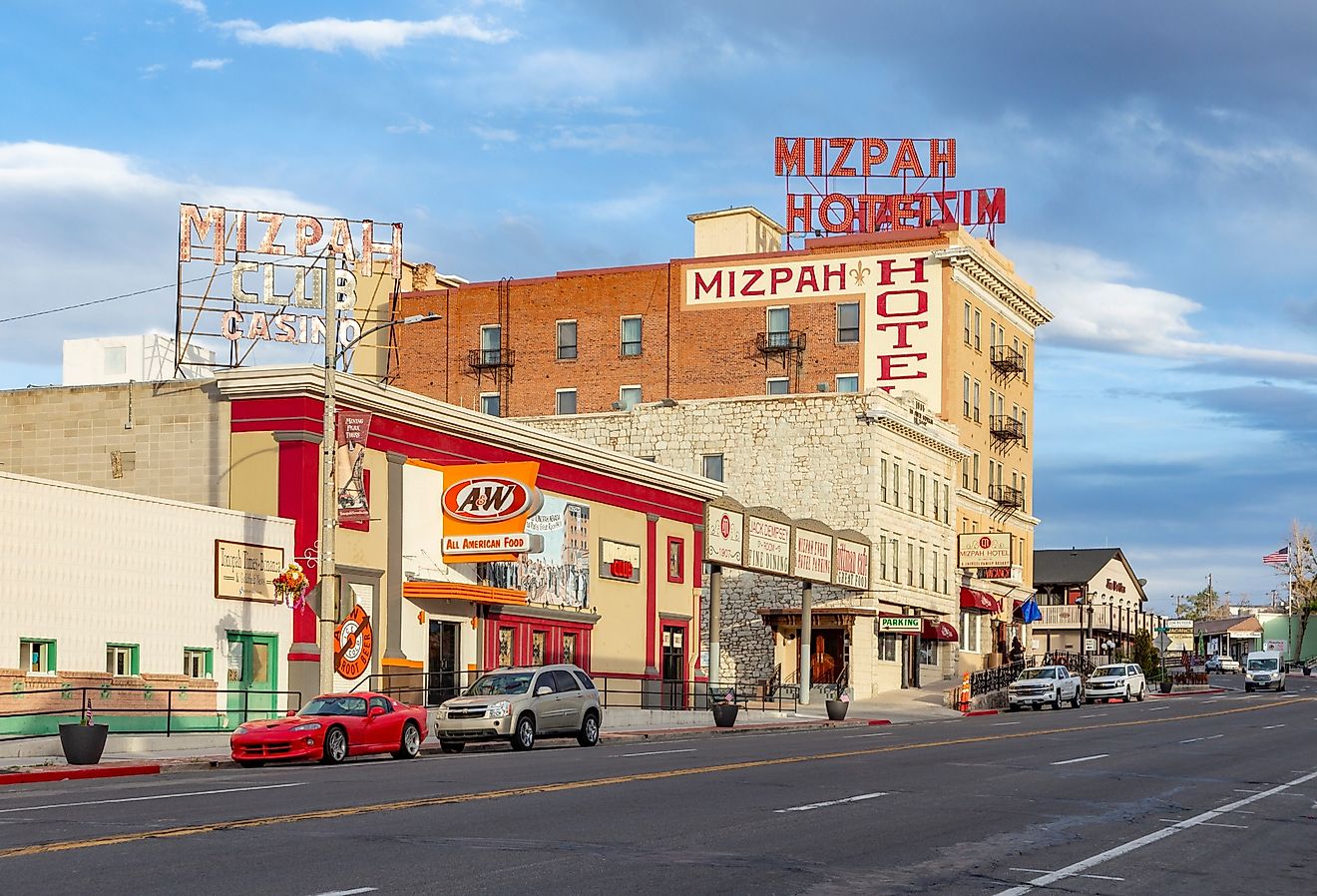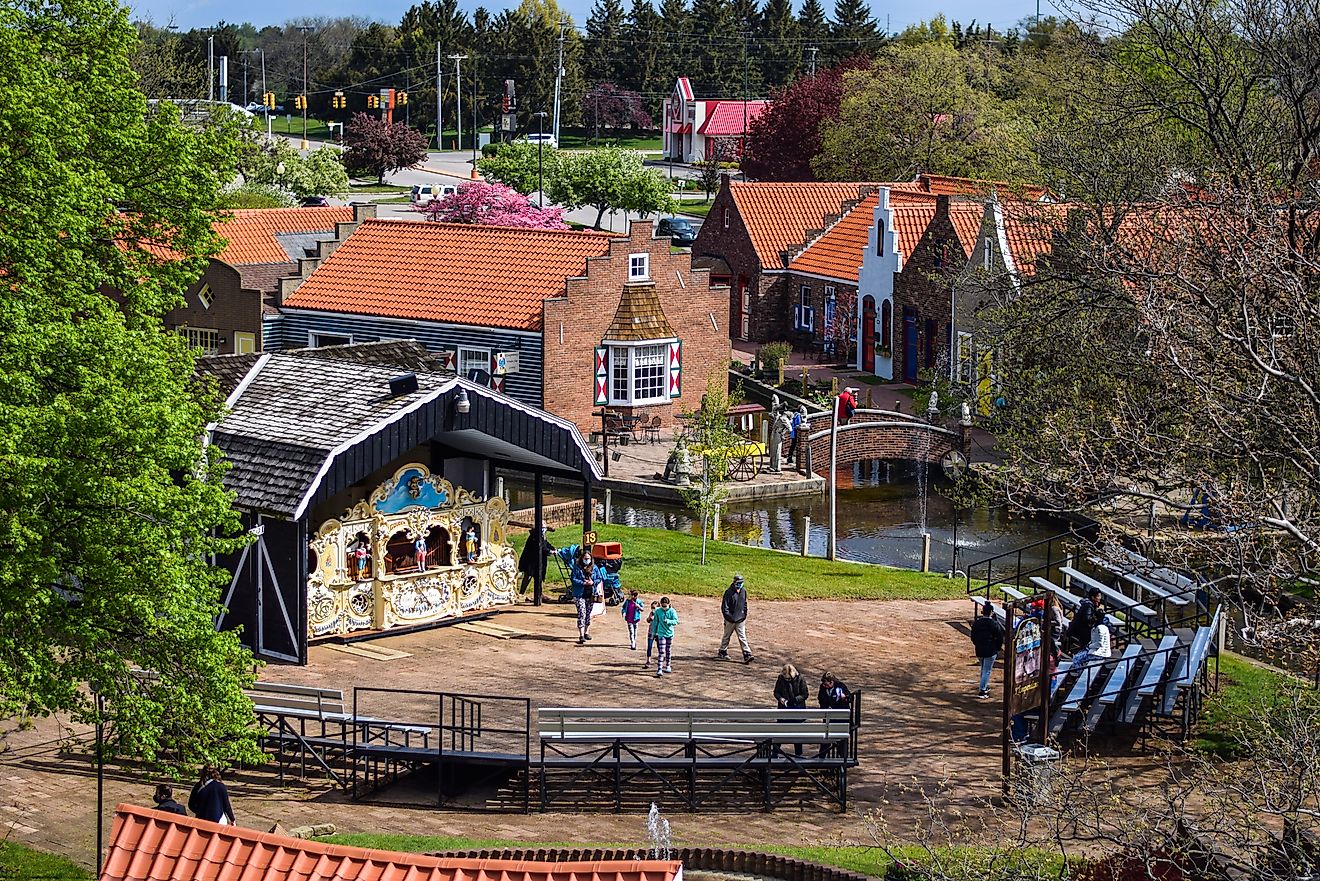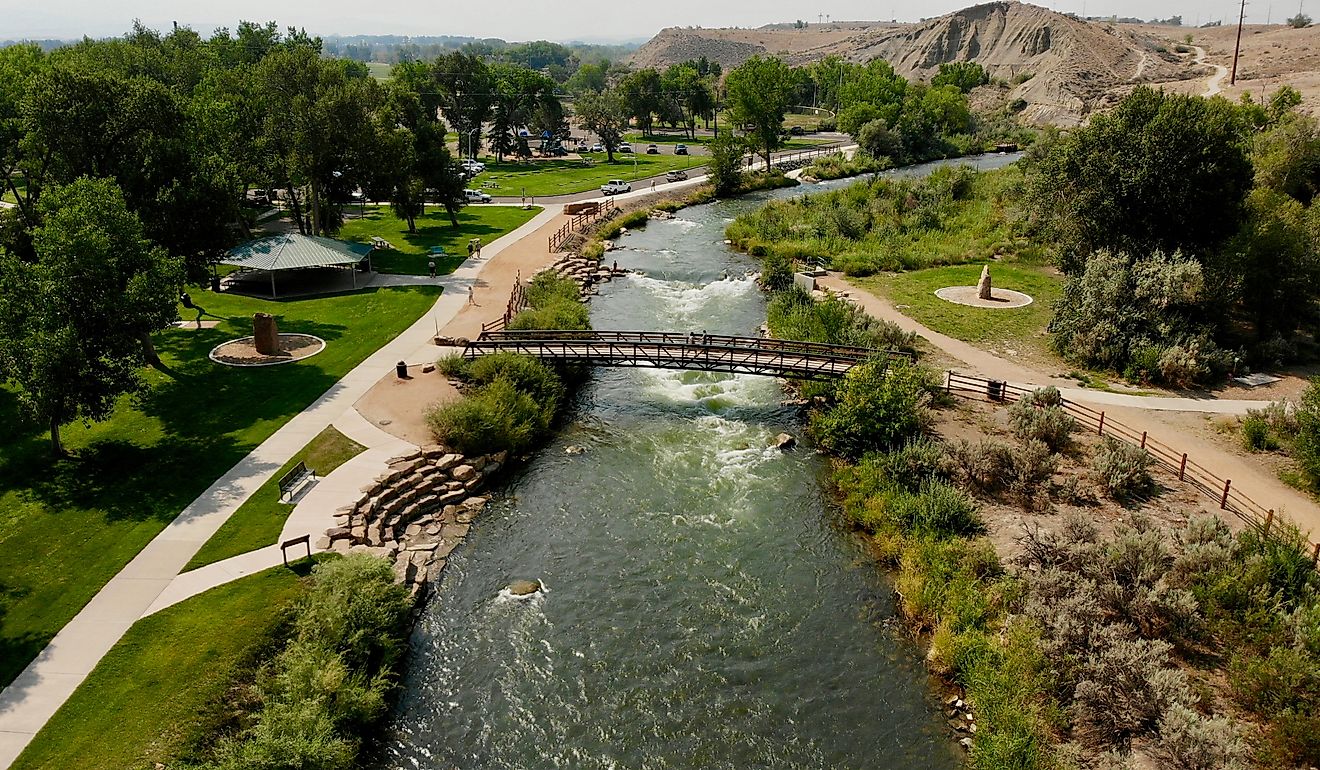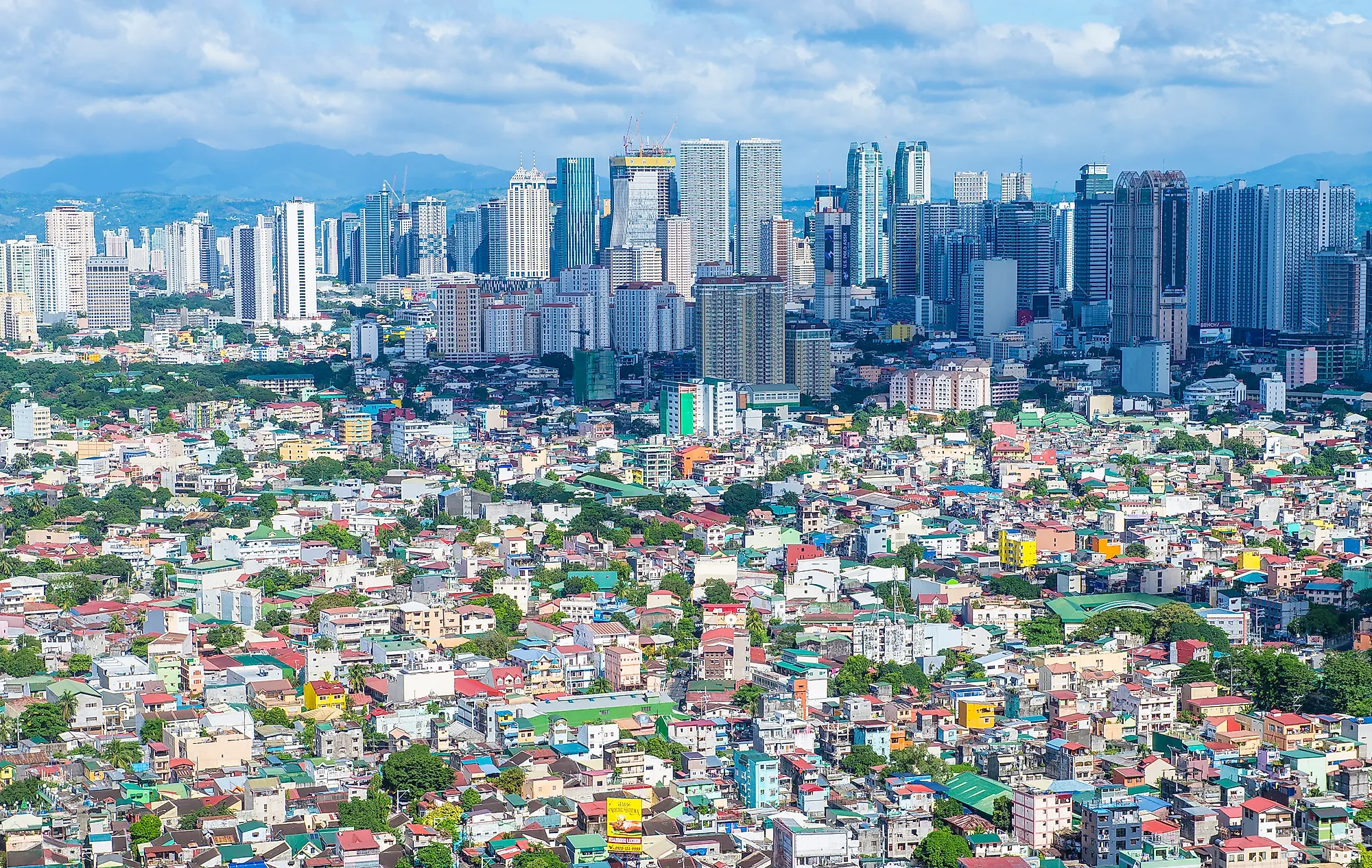
Biggest Cities In The Philippines
- One-third of the Philippines' population reside within Metro Manila.
- Manila, the country's capital, is the most densely populated city in the world.
- Davao City is the biggest city outside the Metro Manila.
- Quezon's population is expected to reach four million by 2025 and 2030 census.
The Philippines is an island country in South East Asia, comprising 7,641 islands. The islands, located in the Pacific Ocean, are broadly divided into three principal geographical divisions; Mindanao, Visayas, and Luzon.
According to the Commission of Population, the Philippines has an estimated population of 114.1 million people as of 2025, making it the world's 12th most populous country. With a total area of approximately 115,000 square miles, the country has an estimated population density of 941.3 persons per square miles, making it the world’s 42nd most densely populated country.
Luzon, the world’s 15th largest island by area, is the Philippines’ most populated island with a population of over 66 million people or 52.5% of the country’s total population. It is home to Quezon and Manila, the two most populous cities in the country. Mindanao is the second-largest island group, with a population of about 27.2 million people, while the Visayas is the smallest island group with about 21.4 million people.
Five Biggest Cities In The Philippines
Approximately one-third of the Philippines' population lives in Metro Manila, which consists of 16 cities. Among these, Quezon, Manila, and Caloocan are the three most populous cities in the country. Metro Manila's density is largely due to its role as the seat of government and as the country’s cultural, educational, and economic center. In addition to these three cities, Davao and Cebu are also among the five largest cities in the Philippines. What factors contribute to the high population of these cities?
1. Quezon City
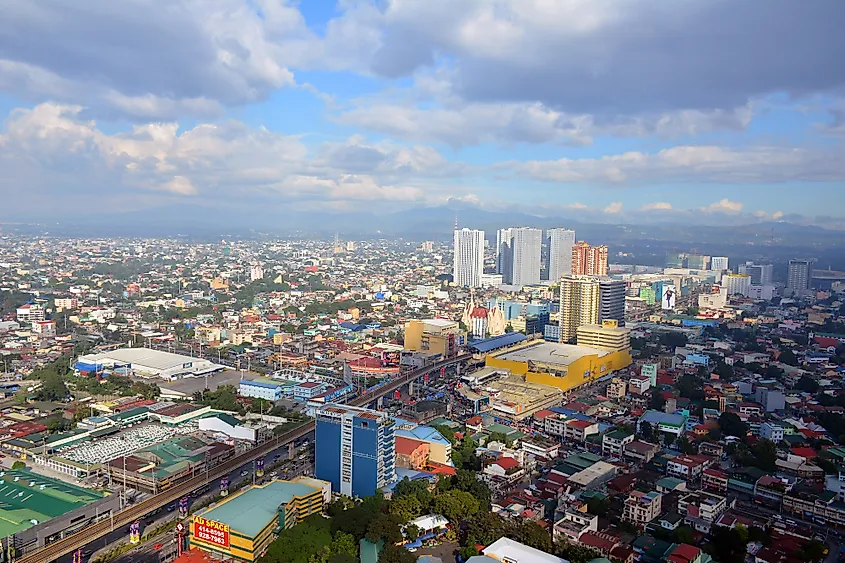
While not the capital, Quezon City is the Philippines' largest city by population, housing approximately 2.9 million individuals. Established by Manuel L. Quezon, the nation’s second president, it was the official capital from 1948 to 1976. Despite being founded in 1939, Quezon City has undergone significant population growth rapidly. It exceeded Manila's population in 1990, becoming the first city to surpass the 2 million mark. Projections indicate that its population may reach 4 million by 2025-2030.
Quezon City is a highly urbanized area and hosts several government offices, including the House of Reps and the seat of the Vice President. Besides, it is also home to some of the largest education institutions in the country, including Ateneo de Manila University and the University of the Philippines Diliman. QC also has several attractions, including Quezon Memorial Circle. Therefore, Quezon City is not only populous because it is highly urbanized, but also because it is an educational, cultural, and entertainment center.
2. Manila
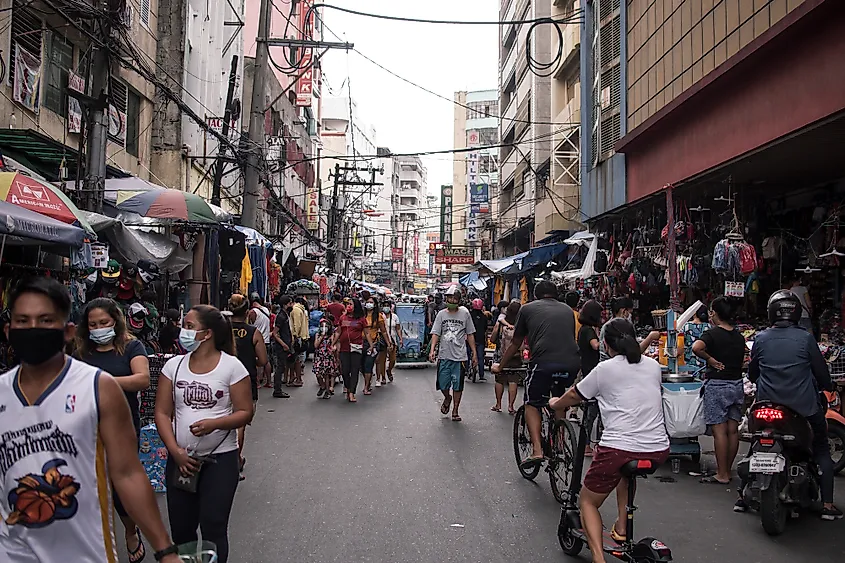
Most capital cities globally rank among the most populated in their countries, and Manila is no exception. It is the second-most populous city in the Philippines, housing roughly 1.84 million residents. Yet, it holds the title of the world’s most densely populated city proper, boasting a population density of around 112,953 people per square mile. This density significantly surpasses that of several major cities worldwide, including Kolkata, Mumbai, Paris, Tokyo, and Shanghai.
Manila is the political, economic, and educational, and ecclesiastical capital of the Philippines. Its population has increased significantly since the turn of the 20th century as more people moved from rural areas to the cities to seek opportunities. It became the first city in the country to cross the one million mark (1960 census). However, Manila’s population has fairly stabilized, with an alternating decrease and increase witnessed in recent census years. The trend may be a result of the population growth experienced by the suburbs.
3. Davao City
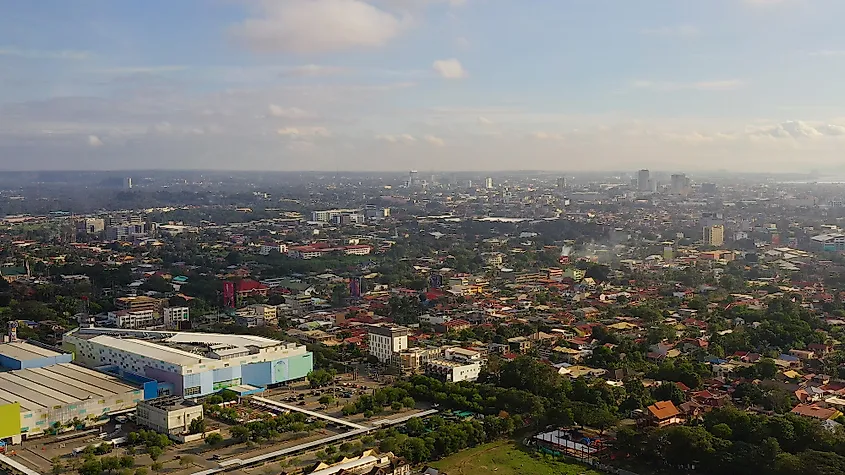
Davao City, home to around 1.78 million residents, is the most populous city outside Metro Manila. From 1995 to 2015, its population grew by about 60%, increasing from one million to 1.6 million. It was the first city in Mindanao to exceed one million residents and continues to be the largest city on the island. According to population forecasts, Davao is expected to overtake Manila and become the second-largest city in the Philippines by the next official census.
Several factors have contributed to the city’s dramatic population growth in recent years. Davao is a first-class highly urbanized city, meaning that it is a high-income city with opportunities for growth and better living standards. It is the main industry, commerce, and trade hub of Mindanao. Besides being a highly urbanized area, Davao is also the Philippines’ largest city by land area, with 943.48 square miles. Its population density is lower than some of the largest cities in the Philippines, making it an attractive place for people looking to settle in not-so-crowded cities.
4. Caloocan
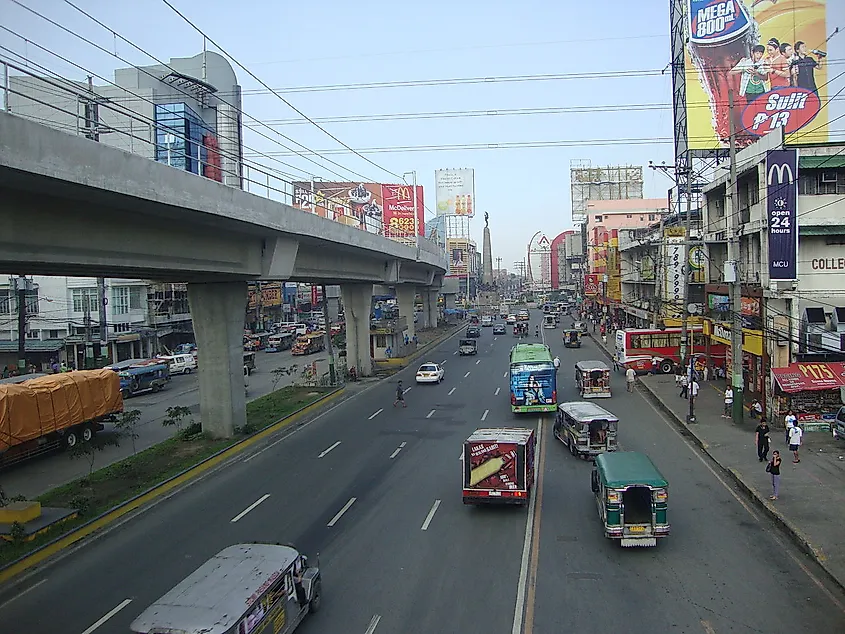
The City of Caloocan is the third-largest city within Metro Manila and the country’s fourth-largest, with a population of approximately 1.66 million people. It covers an area of approximately 21.54 square miles and is bordered by both Quezon and Manila cities. Although Caloocan is a small city, it has a population density of 77,000 persons per square miles, making it one of the most crowded places in the Philippines.
Caloocan’s proximity to Manila, the country’s capital, and Quezon, and its location within the highly urbanized Metro Manila, makes it a preferred settlement. The city also boasts of industrial and commercial activities and a large residential area, making it a highly urbanized center.
5. Taguig
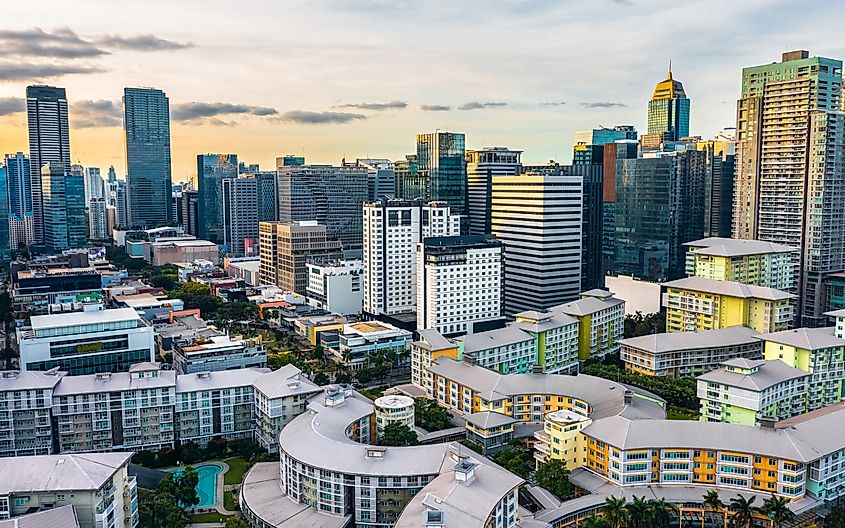
Taguig City in the Philippines has experienced remarkable population growth, transforming from a largely rural area into one of Metro Manila's most dynamic urban centers. In the 1990s, the city had approximately 381,000 residents in 1995, but this number began climbing rapidly as urban development accelerated. By 2000, the population had grown to around 467,000, and continued its upward trajectory with about 644,000 residents recorded in the 2010 census. The growth momentum continued through the 2010s, reaching an estimated 1,223,595 in 2024
The dramatic population increase stems primarily from Taguig's transformation from an agricultural area into a major business and residential hub. The development of Bonifacio Global City (BGC) starting in the 1990s served as a key catalyst, attracting both multinational corporations and residents seeking modern urban amenities. The city became renowned for its contemporary infrastructure, world-class shopping centers, and luxurious high-rise residential developments, making it increasingly attractive to both Filipino families and expatriate communities.
The Philippines’ Population Trend
Apart from Manila, the majority of cities in the Philippines have seen a consistent rise in their populations. Cities like Quezon are projected to reach a population of around 4 million by the 2025 and 2030 censuses, while Davao’s population is anticipated to exceed that of Manila. Overall, the nation recorded a 1.72% growth rate from 2010 to 2015, in contrast to a 1.9% increase during the period from 2000 to 2010. Since 2013, the government has attempted to lower the population growth rate through the Reproductive Health Law, but this initiative has sparked significant debate.
The growing urban population is presenting challenges for local authorities. There is a direct correlation between rising demographics and the crime rate. As the nation's population rises, particularly in cities, job opportunities diminish, pushing many unemployed individuals in the Philippines toward crime. From 2010 to 2015, Manila averaged 9,100 reported crime cases annually.
Cities In The Philippines By Population
| Rank | City | Population | Density |
|---|---|---|---|
| 1 | Quezon City | 2,960,048 | 17,239/km2 (44,648/sq mi) |
| 2 | Manila | 1,846,513 | 43,612/km2 (112,953/sq mi) |
| 3 | Davao City | 1,776,949 | 727/km2 (1,883/sq mi) |
| 4 | Caloocan | 1,661,584 | 29,777/km2 (77,123/sq mi) |
| 5 | Taguig | 1,223,595 | 18,755/km2 (48,574/sq mi) |
| 6 | Zamboanga City | 977,234 | 659/km2 (1,706/sq mi) |
| 7 | Cebu City | 964,169 | 3,061/km2 (7,928/sq mi) |
| 8 | Antipolo | 887,399 | 2,899/km2 (7,509/sq mi) |
| 9 | Pasig | 803,159 | 16,574/km2 (42,926/sq mi) |
| 10 | Cagayan de Oro | 728,402 | 1,765/km2 (4,570/sq mi) |
| 11 | Valenzuela | 714,978 | 15,206/km2 (39,383/sq mi) |
| 12 | Dasmariñas | 703,141 | 7,801/km2 (20,206/sq mi) |
| 13 | General Santos | 697,315 | 1,415/km2 (3,664/sq mi) |
| 14 | Parañaque | 689,992 | 14,816/km2 (38,374/sq mi) |
| 15 | Bacoor | 664,625 | 14,395/km2 (37,283/sq mi) |
| 16 | San Jose del Monte | 651,813 | 6,177/km2 (15,997/sq mi) |
| 17 | Las Piñas | 606,293 | 18,547/km2 (48,036/sq mi) |
| 18 | Bacolod | 600,783 | 3,693/km2 (9,566/sq mi) |
| 19 | Muntinlupa | 543,445 | 13,672/km2 (35,409/sq mi) |
| 20 | Calamba | 539,671 | 3,610/km2 (9,349/sq mi) |
| 21 | Lapu-Lapu City | 497,604 | 8,565/km2 (22,182/sq mi) |
| 22 | Imus | 496,794 | 9,347/km2 (24,209/sq mi) |
| 23 | Angeles City | 462,928 | 6,985/km2 (18,092/sq mi) |
| 24 | Iloilo City | 457,626 | 5,842/km2 (15,130/sq mi) |
| 25 | Marikina | 456,159 | 21,197/km2 (54,900/sq mi) |
| 26 | General Trias | 450,583 | 5,006/km2 (12,965/sq mi) |
| 27 | Pasay | 440,656 | 31,543/km2 (81,696/sq mi) |
| 28 | Mandaluyong | 425,758 | 37,812/km2 (97,931/sq mi) |
| 29 | Santa Rosa | 414,812 | 7,564/km2 (19,591/sq mi) |
| 30 | Biñan | 407,437 | 9,366/km2 (24,259/sq mi) |
| 31 | Tarlac City | 385,398 | 1,403/km2 (3,634/sq mi) |
| 32 | Malabon | 380,522 | 24,222/km2 (62,734/sq mi) |
| 33 | Lipa | 372,931 | 1,781/km2 (4,613/sq mi) |
| 34 | Butuan | 372,910 | 457/km2 (1,183/sq mi) |
| 35 | Baguio | 366,358 | 6,370/km2 (16,499/sq mi) |
| 36 | Mandaue | 364,116 | 10,442/km2 (27,045/sq mi) |
| 37 | Iligan | 363,115 | 446/km2 (1,156/sq mi) |
| 38 | Cabuyao | 355,330 | 8,187/km2 (21,205/sq mi) |
| 39 | San Fernando | 354,666 | 5,236/km2 (13,560/sq mi) |
| 40 | Batangas City | 351,437 | 1,242/km2 (3,217/sq mi) |
| 41 | Cabanatuan | 327,325 | 1,702/km2 (4,409/sq mi) |
| 42 | San Pedro | 326,001 | 13,555/km2 (35,108/sq mi) |
| 43 | Cotabato City | 325,079 | 1,847/km2 (4,784/sq mi) |
| 44 | Puerto Princesa | 307,079 | 129/km2 (334/sq mi) |
| 45 | Tagum | 296,202 | 1,513/km2 (3,918/sq mi) |
| 46 | Mabalacat | 293,244 | 3,525/km2 (9,131/sq mi) |
| 47 | Makati | 292,743 | 29,189/km2 (75,600/sq mi) |
| 48 | San Pablo | 285,348 | 1,444/km2 (3,741/sq mi) |
| 49 | Lucena | 278,924 | 3,477/km2 (9,006/sq mi) |
| 50 | Talisay | 263,048 | 6,598/km2 (17,088/sq mi) |
| 51 | Malolos | 261,189 | 3,884/km2 (10,059/sq mi) |
| 52 | Olongapo | 260,317 | 1,407/km2 (3,644/sq mi) |
| 53 | Tacloban | 251,881 | 1,249/km2 (3,234/sq mi) |
| 54 | Navotas | 247,543 | 27,689/km2 (71,715/sq mi) |
| 55 | Ormoc | 230,998 | 376/km2 (975/sq mi) |
| 56 | Meycauayan | 225,673 | 7,030/km2 (18,208/sq mi) |
| 57 | Santo Tomas | 218,500 | 2,290/km2 (5,931/sq mi) |
| 58 | Valencia | 216,546 | 369/km2 (955/sq mi) |
| 59 | Trece Martires | 210,503 | 5,384/km2 (13,944/sq mi) |
| 60 | Pagadian | 210,452 | 556/km2 (1,439/sq mi) |
| 61 | Legazpi | 209,533 | 1,363/km2 (3,531/sq mi) |
| 62 | Panabo | 209,230 | 231/km2 (597/sq mi) |
| 63 | Naga | 209,170 | 2,476/km2 (6,413/sq mi) |
| 64 | Toledo | 207,314 | 959/km2 (2,483/sq mi) |
| 65 | Marawi | 207,010 | 2,364/km2 (6,124/sq mi) |
| 66 | San Carlos | 205,424 | 1,215/km2 (3,148/sq mi) |
| 67 | Kabankalan | 200,198 | 287/km2 (744/sq mi) |
| 68 | Koronadal | 195,398 | 705/km2 (1,827/sq mi) |
| 69 | Tanauan | 193,936 | 1,810/km2 (4,687/sq mi) |
| 70 | Bago | 191,210 | 477/km2 (1,234/sq mi) |
| 71 | Malaybalay | 190,712 | 197/km2 (510/sq mi) |
| 72 | Digos | 188,376 | 656/km2 (1,699/sq mi) |
| 73 | Calbayog | 186,960 | 212/km2 (550/sq mi) |
| 74 | Sorsogon City | 182,237 | 660/km2 (1,709/sq mi) |
| 75 | Roxas | 179,292 | 1,886/km2 (4,884/sq mi) |
| 76 | Dagupan | 174,302 | 4,682/km2 (12,126/sq mi) |
| 77 | Surigao City | 171,107 | 698/km2 (1,807/sq mi) |
| 78 | Baliwag | 168,470 | 3,740/km2 (9,686/sq mi) |
| 79 | Tuguegarao | 166,334 | 1,149/km2 (2,975/sq mi) |
| 80 | Kidapawan | 160,791 | 449/km2 (1,162/sq mi) |
| 81 | Cadiz | 158,544 | 302/km2 (783/sq mi) |
| 82 | Ilagan | 158,218 | 136/km2 (351/sq mi) |
| 83 | Danao | 156,321 | 1,457/km2 (3,773/sq mi) |
| 84 | San Jose | 150,917 | 811/km2 (2,102/sq mi) |
| 85 | Sagay | 148,894 | 451/km2 (1,167/sq mi) |
| 86 | Santiago | 148,580 | 582/km2 (1,506/sq mi) |
| 87 | Mati | 147,547 | 251/km2 (649/sq mi) |
| 88 | Calapan | 145,786 | 583/km2 (1,510/sq mi) |
| 89 | Urdaneta | 144,577 | 1,442/km2 (3,735/sq mi) |
| 90 | Cauayan | 143,403 | 426/km2 (1,104/sq mi) |
| 91 | Tabaco | 140,961 | 1,203/km2 (3,117/sq mi) |
| 92 | Ozamiz | 140,334 | 826/km2 (2,139/sq mi) |
| 93 | Dipolog | 138,141 | 573/km2 (1,484/sq mi) |
| 94 | Gingoog | 136,698 | 240/km2 (623/sq mi) |
| 95 | Carcar | 136,453 | 1,168/km2 (3,026/sq mi) |
| 96 | Dumaguete | 134,103 | 3,989/km2 (10,331/sq mi) |
| 97 | Naga | 133,184 | 1,306/km2 (3,383/sq mi) |
| 98 | San Carlos | 132,650 | 294/km2 (761/sq mi) |
| 99 | Silay | 130,478 | 607/km2 (1,573/sq mi) |
| 100 | Isabela | 130,379 | 583/km2 (1,509/sq mi) |
| 101 | San Juan | 126,347 | 21,235/km2 (54,998/sq mi) |
| 102 | San Fernando | 125,640 | 1,223/km2 (3,168/sq mi) |
| 103 | Gapan | 122,968 | 748/km2 (1,937/sq mi) |
| 104 | Bayawan | 122,747 | 176/km2 (455/sq mi) |
| 105 | Tabuk | 121,033 | 173/km2 (448/sq mi) |
| 106 | Ligao | 118,096 | 479/km2 (1,240/sq mi) |
| 107 | Samal | 116,771 | 388/km2 (1,004/sq mi) |
| 108 | Himamaylan | 116,240 | 317/km2 (820/sq mi) |
| 109 | Iriga | 114,457 | 833/km2 (2,158/sq mi) |
| 110 | Tayabas | 112,658 | 488/km2 (1,263/sq mi) |
| 111 | Baybay | 111,848 | 244/km2 (631/sq mi) |
| 112 | Laoag | 111,651 | 962/km2 (2,491/sq mi) |
| 113 | Bayugan | 109,499 | 159/km2 (412/sq mi) |
| 114 | Tacurong | 109,319 | 713/km2 (1,846/sq mi) |
| 115 | Talisay | 108,909 | 541/km2 (1,402/sq mi) |
| 116 | Catbalogan | 106,440 | 388/km2 (1,005/sq mi) |
| 117 | Carmona | 106,256 | 3,580/km2 (9,272/sq mi) |
| 118 | Tagbilaran | 104,976 | 2,876/km2 (7,449/sq mi) |
| 119 | Masbate City | 104,522 | 556/km2 (1,440/sq mi) |
| 120 | Balanga | 104,173 | 933/km2 (2,417/sq mi) |
| 121 | Guihulngan | 102,656 | 264/km2 (684/sq mi) |
| 122 | Cavite City | 100,674 | 9,245/km2 (23,943/sq mi) |
| 123 | Lamitan | 100,150 | 283/km2 (732/sq mi) |
| 124 | Alaminos | 99,397 | 605/km2 (1,567/sq mi) |
| 125 | Bislig | 99,290 | 299/km2 (775/sq mi) |
| 126 | Escalante | 96,159 | 499/km2 (1,292/sq mi) |
| 127 | Victorias | 90,101 | 673/km2 (1,743/sq mi) |
| 128 | Passi | 88,873 | 354/km2 (916/sq mi) |
| 129 | Bogo | 88,867 | 858/km2 (2,223/sq mi) |
| 130 | Maasin | 87,446 | 413/km2 (1,070/sq mi) |
| 131 | Calaca | 87,361 | 762/km2 (1,975/sq mi) |
| 132 | Tagaytay | 85,330 | 1,313/km2 (3,400/sq mi) |
| 133 | Dapitan | 85,202 | 218/km2 (565/sq mi) |
| 134 | Bais | 84,317 | 264/km2 (683/sq mi) |
| 135 | Muñoz | 84,308 | 162/km2 (420/sq mi) |
| 136 | Tanjay | 82,642 | 309/km2 (802/sq mi) |
| 137 | Cabadbaran | 80,354 | 375/km2 (971/sq mi) |
| 138 | Sipalay | 72,448 | 191/km2 (494/sq mi) |
| 139 | Oroquieta | 72,301 | 304/km2 (787/sq mi) |
| 140 | Borongan | 71,961 | 151/km2 (392/sq mi) |
| 141 | Tangub | 68,389 | 420/km2 (1,088/sq mi) |
| 142 | La Carlota | 66,664 | 486/km2 (1,258/sq mi) |
| 143 | Tandag | 62,669 | 215/km2 (556/sq mi) |
| 144 | Candon | 61,432 | 595/km2 (1,541/sq mi) |
| 145 | Canlaon | 58,822 | 344/km2 (891/sq mi) |
| 146 | El Salvador | 58,771 | 554/km2 (1,434/sq mi) |
| 147 | Batac | 55,484 | 344/km2 (892/sq mi) |
| 148 | Vigan | 53,935 | 2,147/km2 (5,561/sq mi) |
| 149 | Palayan | 45,383 | 448/km2 (1,159/sq mi) |
